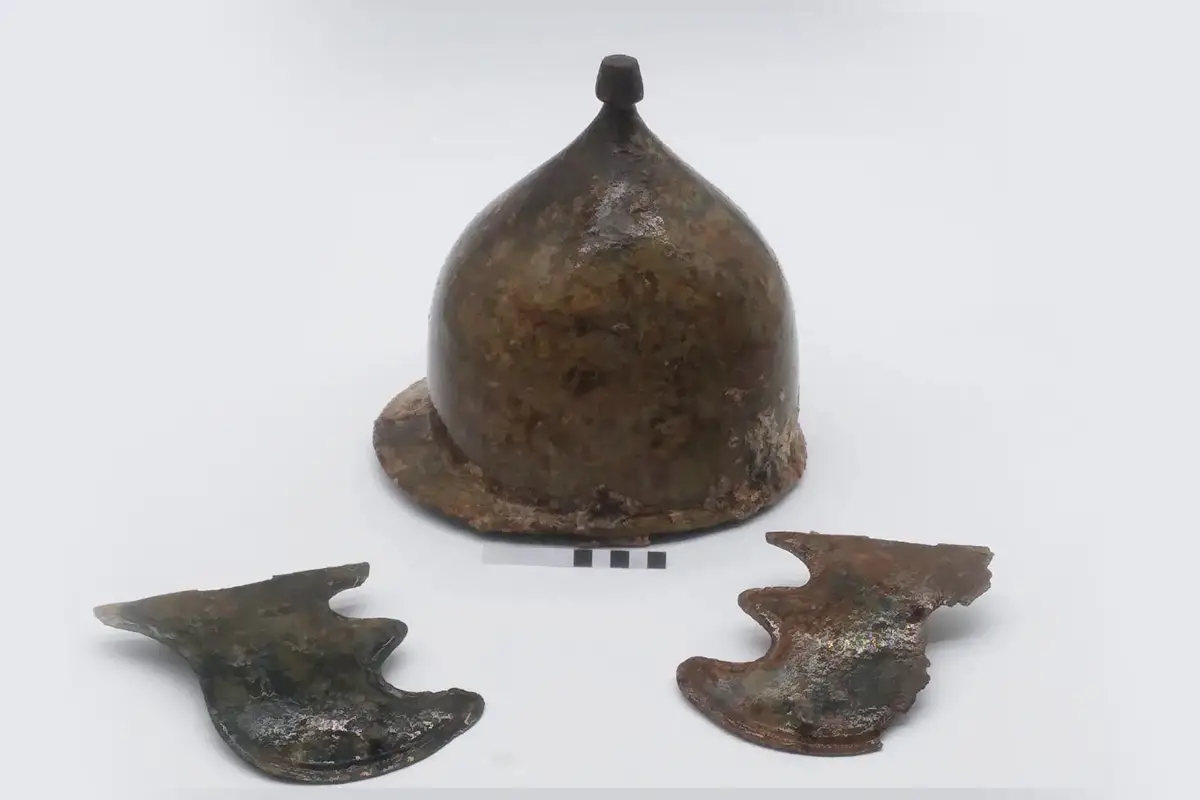Archaeologists have discovered an intact Roman helmet while conducting an underwater study near the Aegadian Islands off Sicily’s western coast.
The helmet dates from the time of the First Punic War (264–241 BC), the first of three major wars fought between the Roman Republic and Carthage, the two main superpowers competing for domination of the western Mediterranean.
The conflict was mostly fought on and around Sicily, resulting in the island being annexed as a Roman province and Carthage forced to pay large reparations.
Remarkably preserved with both cheekpieces still intact, the helmet has been identified as a Montefortino type – a military helmet used from around 300 BC through the 1st century AD.
Characterised by their conical, spin-formed bronze body, mushroom-shaped knob at the crown, flared rim, and protective neck guard, these helmets were practical, durable, and easily mass-produced.
Named after the region of Montefortino, the earliest incarnation of the Montefortino type had strong Celtic and Etruscan influences, remaining the most popular Roman helmet until it was replaced by the Coolus helmet (however, it continued to be used in the standard gear of the Praetorian guard).
The example found near the Aegadian Islands comes from the site of the Battle of the Aegates, fought on 10 March 241 BC, a naval conflict and the final and deciding battle of the First Punic War.
For over 15 years, the Sicily’s Superintendency of the Sea has partnered with expert divers and maritime archaeologists to systematically survey the seabed around the Aegadian Islands.
Their study has yielded a remarkable array of finds over the years, such as armour, weapons, pottery, and numerous Montefortino type helmets – alongside an unparalleled collection of bronze rams (rostra) once fixed to the prows of warships.
Header Image Credit : Sicily’s Superintendency of the Sea
Sources : Sicily’s Superintendency of the Sea





